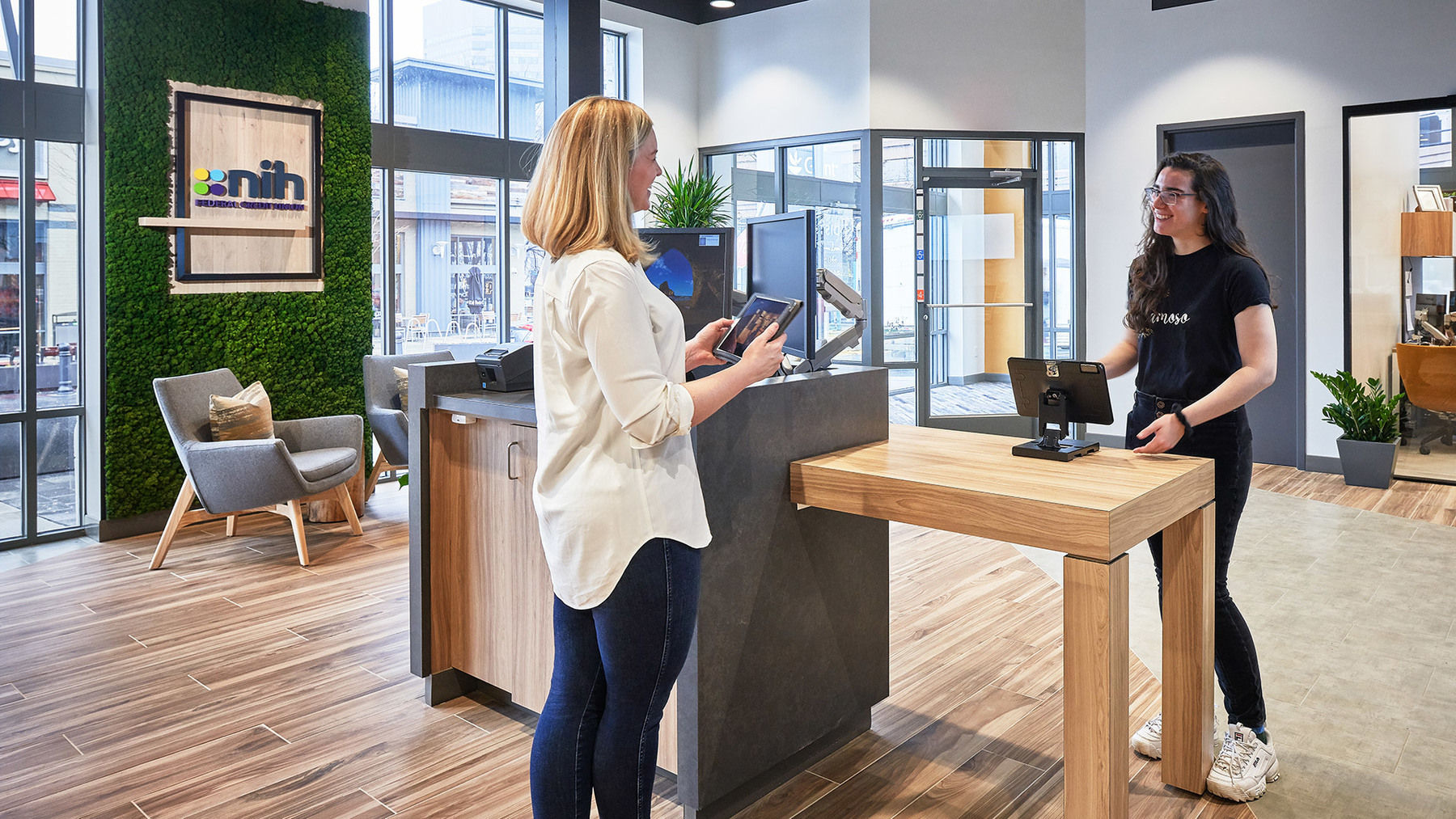We believe that flexibility should be a top priority in branching strategy and new branch design, both helping you rise to the challenge of global emergencies and adapt to changing consumer demands.
Credit unions and community banks faced an unprecedented disruption at the onset of the COVID-19 pandemic – completely transform the way that they interact with members and customers almost overnight. Branches closed to customers and the lockdown drove demand for services such as the PPP loans. Yet branches designed for more flexibility could have made transformation much easier.
With lockdowns and social distancing, services could no longer be delivered effectively in-branch while operations centers and call centers had difficulty maintaining staffing levels. This situation overwhelmed many financial institutions. But more flexible and resilient branches could relieve this stress. Unassigned offices could be reconfigured as temporary phone and video banking stations, as could community rooms. Lobbies with open layouts and easily moved furniture could be transformed into socially distant call centers. Mobile banking technology such as tablets and laptops could allow staff to meet customers in safer settings, such as at the entrances to buildings or waiting areas.
It’s impossible to predict the future, but designing for flexibility can help your organization plan for the unexpected and quickly adapt to dramatic changes.
This isn’t just about responding to disaster, either. The industry was already facing an era of accelerating change, driven primarily by the adoption of mobile banking. This trend is causing a shift away from transactional banking to more conversational and relationship-based models. Even areas with high in-person transaction volume demands may see these needs drop rapidly in the coming years. While COVID-19 will not be permanent, it has accelerated these changes even more and introduced a large number of holdouts to digital banking. Mobile banking adoption spiked 200% in April. The need for branches won’t go away, but their purpose is shifting, and credit unions and community banks can adapt through flexible designs.
Consider Verity Credit Union, whose West Seattle branch features a retractable storefront and moveable furniture on casters. The branch is located near a busy intersection that becomes a farmer’s market on the weekend, and during the market and on nice days the branch is reconfigured into a community space with a greeting station at the sidewalk where members of the community can sign up for new accounts. There are rotating local community art displays on the wall and children can have their face painted. And on regular days, the branch reconfigures for a café style universal associate model. The flexibility of the branch allows Verity to become an integral part of the community and resonate with members in an authentic way.
Armco Credit Union built a new hub branch in an up-and-coming area, and the branch features a number of flexible offices for staff to rotate through and provide a range of services that there isn’t currently enough demand to justify staffing full time. The branch also features a community room that transforms into a training area and small business incubator, maximizing the use of the space and exposing the credit union to more business and expand their customer base.

